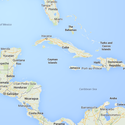-
About
- About Listly
- Community & Support
- Howto
- Chrome Extension
- Bookmarklet
- WordPress Plugin
- Listly Premium
- Privacy
- Terms
- DMCA Copyright
- © 2010-2025 Boomy Labs

 List Builder
List Builder
Listly by List Builder
Top Things to Do in Salvador, Brazil, from a Cruise Ship - Feel free to add, vote or provide feedback to the list
The São Francisco Church and Convent of Salvador ( Portuguese: Convento e Igreja de São Francisco) is located in the historical centre of Salvador, in the State of Bahia, Brazil. The convent and its church are very important colonial monuments in Brazil.
The Museu Rodin Bahia is a museum devoted to the works of Auguste Rodin, in Salvador, Bahia, Brazil.
O Museu de Arte Moderna da Bahia ( MAM-BA) está localizado no Solar do Unhão, um sítio histórico do século XVI, às margens da Baía de Todos os Santos em Salvador. Fundado no início da década de 1960, inicialmente o MAM-BA localizava-se no Teatro Castro Alves, tendo mudado para o endereço atual no ano de 1966.
The Estádio Fonte Nova, also known as Estádio Octávio Mangabeira, was a football stadium inaugurated on January 28, 1951 in Salvador, Bahia, with a maximum capacity of 66,080 people. The stadium was owned by the Bahia government, and was the home ground of Esporte Clube Bahia and Esporte Clube Vitória.
Castro Alves was born in the town of Curralinho (rechristened "Castro Alves" in his honor in 1900), in the Brazilian State of Bahia, to Antônio José Alves, a medician, and Clélia Brasília da Silva Castro, one of the daughters of José Antônio da Silva Castro (a.k.a.
The Cathedral Basilica of Salvador ( Catedral Basílica de Salvador), officially dedicated to the Transfiguration of Christ and named Primatial Cathedral Basilica of the Transfiguration of the Lord is the seat of the Archbishop of the city of Salvador, in the State of Bahia, in Brazil.
Olodum is widely credited with developing the music style known as samba reggae and for its active participation in each year. Neguinho do Samba, the lead percussionist, created a mix of the traditional Brazilian samba beat with merengue, salsa, and reggae rhythms for the Carnaval of 1986. This became known as samba reggae.
The Charitable Works Foundation of Sister Dulce, known by its Portuguese acronym as OSID, is a private non-profit philanthropic organization, established on May 26, 1959 by Brazilian Catholic nun Sister Dulce. It consists of 14 nuclei, 13 of them at the Roma Hospital Complex, a 1.000 bed teaching hospital, in Salvador, Bahia.
A ilha dos Frades localiza-se praticamente no centro da baía de Todos os Santos, pertencendo ao município de Salvador. Com apenas seis quilômetros de comprimento, possui a forma de uma estrela de quinze pontas e apresenta belas paisagens, com praias, lagos, cachoeiras, montanhas, coqueirais e uma vegetação típica da Mata Atlântica, com árvores nativas, inclusive o pau-brasil.
The Federal University of Bahia ( Portuguese: Universidade Federal da Bahia, UFBA) is a public university located mainly in the city of Salvador. It is the largest university of the state of Bahia. Students can study there without paying tuition fees, as it is a public university.
The Church of Nosso Senhor do Bonfim ( Portuguese: Igreja de Nosso Senhor do Bonfim) is the most famous of the Catholic churches of Salvador, in the State of Bahia, Brazil. It was built in the 18th century on a hill in the Itapagipe Peninsula, in the lower town of Salvador.
A Santa Casa de Misericórdia é uma irmandade que tem como missão o tratamento e sustento a enfermos e inválidos, além de dar assistência a "expostos" - recém nascidos abandonados na instituição.
Jorge Leal Amado de Faria ( Brazilian Portuguese: [ˈʒɔʁʒi lɛˈaw ɐˈmadu dʒi fɐˈɾi.ɐ], 10 August 1912 - 6 August 2001) was a Brazilian writer of the modernist school. He was the best-known of modern Brazilian writers, his work having been translated into some 49 languages and popularized in film, notably Dona Flor and Her Two Husbands in 1978.
